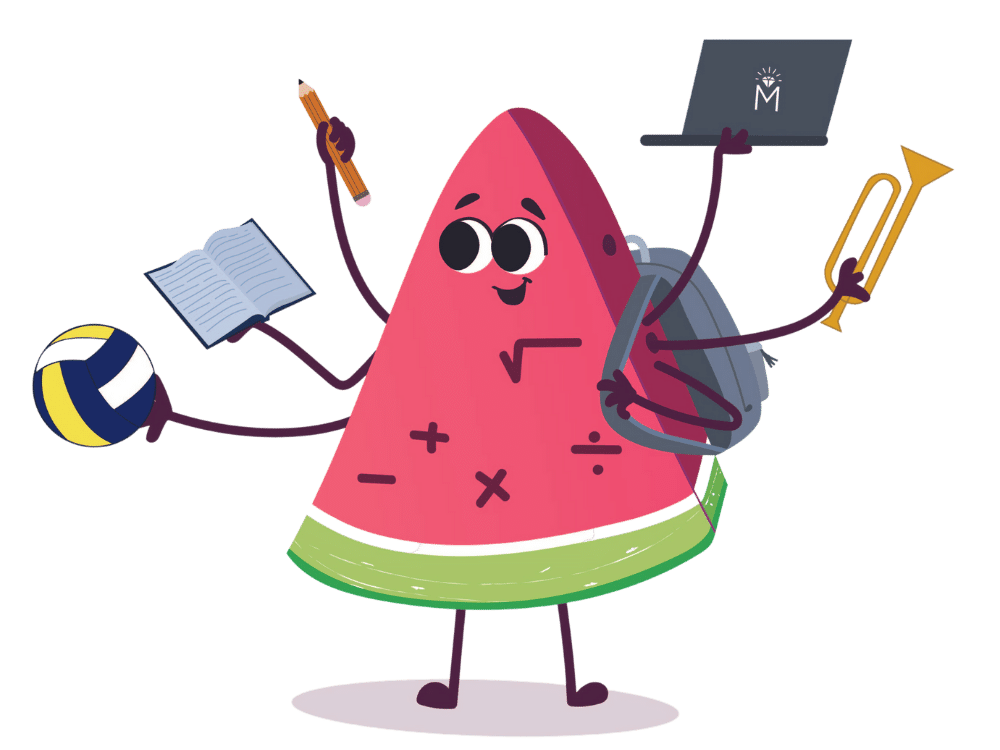After more than 12 years working closely with students preparing for the ISEE or SSAT exams, there’s something I see year in and year out: while some proactive families start their preparation in the spring or summer, a large number of families tend to put it off until fall.
The admissions deadline for most independent schools is in January so families typically schedule the exams for November, December, or early January.
Starting ISEE and SSAT test prep in September leaves only a few months to prepare. Students can be successful within this timeframe, however there are distinct advantages to starting preparation earlier. So when should you start preparing for the ISEE or SSAT? Let’s explore 6 compelling reasons why spring and summer offer the ideal head start.
#1 Building vocabulary takes time
The verbal reasoning sections of the ISEE and SSAT exams present challenging vocabulary that even above-average students may find difficult.
It is a Verbal Reasoning section and not a Vocabulary section, after all. It’s designed to assess whether a student has developed the reasoning skills to figure out unfamiliar words. Success in this section hinges on a combination of honing these reasoning skills and expanding the student’s vocabulary such that the reasoning skills are eventually not needed.
By starting ISEE or SSAT preparation in the spring, students have time to build vocabulary in ways that are not only effective, but also enjoyable!
#2 Starting early gives time to build habits
The ISEE and SSAT are competitive exams, rewarding not only academic achievement but the cultivation of excellent habits.
The math sections require effective systems for navigating through multi-step problems. Habits like underlining important information, creating models or sketches, and documenting steps and calculations all contribute to accurate problem-solving. But advice like this alone won’t magically transform students into habit-driven problem solvers; they need sufficient time to develop and internalize these habits.
For example, consider the application of “t-charts” in quantitative reasoning questions. I like to rely on these visual aids to organize my thinking during problem-solving sessions, and I consistently model this approach by thinking aloud with students saying “Oh! It looks like I should draw a ‘t-chart’ for this!”. Eventually, the students suggest this before I do as this idea becomes part of their problem-solving skill set.
This is not memorization, but developing and building habits and skills. Preparing for the ISEE or SSAT in the spring or summer will allow ample time to build these skills.
#3 The fall is already busy enough!
The beginning of a new school year is always busy. Students find themselves adjusting to new teachers, higher expectations, additional extracurricular activities, and increased workloads. On top of these demands, independent school applicants must complete applications, craft compelling essays, and potentially engage in school visits and interviews.
By beginning ISEE or SSAT preparation during the spring or summer, students will lighten the workload of the already-hectic fall season. More importantly, they can lower their stress levels.

While summers may be packed with camps, activities, and family time, scheduling a reasonable amount of test prep during this period can significantly reduce stress in the ensuing fall and winter months, which is no small accomplishment!
#4 A long-range study plan offers better
One of the challenges of preparing for the ISEE or SSAT is identifying the most valuable resources to use. Practice tests vary in difficulty, and different publishers prioritize different aspects of the exam. Some aim for test simulation while others offer foundational materials.
Starting ISEE or SSAT test preparation in the spring or summer gives students the opportunity to work with a variety of resources. Since students respond differently to various resources, the availability of a broader selection provides more opportunities for concepts to “click” and resonate with them.
For example, some students may find math practice on their iPads enjoyable, while others may thrive on the structure offered by workbook exercises. Allowing students enough time to figure out which materials best suit their learning style will prove to be a valuable investment.
#5 Starting in the spring or summer gives time for necessary breaks
When training for athletic events, rest days are intentionally incorporated into the schedule as part of the training process. Similarly, in business or creative pursuits, people often come up with their best ideas when they step away from their work or project.
Students who have the opportunity to take breaks during their preparation for the ISEE or SSAT discover that concepts “click” better upon returning to their studies.
When students enjoy a week or more off from school during spring or summer holidays, they can relax and have a break from the demands of their regular academic schedule. Lessons conducted under these relaxed conditions often lead to real breakthroughs with tricky concepts.

Some of my best teaching experiences with students have occurred when they are just steps away from the beach.
To make room for these invaluable breaks, students need to start preparing for the ISEE and SSAT in the spring or summer.
#6 Knowing oneself takes time
A crucial part of becoming a skilled test-taker is self-awareness as a student. Within a 30-question section of the exam, a student may need to make as many if not more decisions.
Considering the time constraints, the right choice could be to make a quick guess, perform only partial calculations before guessing, or take other strategic approaches.
When students engage in practice sections over an extended period of time, they can experiment with these risks and strategies, building confidence in what works best for their individual abilities and preferences.

In working with students preparing for the ISEE or SSAT, my goals extend beyond a competitive score on the exam. I see the preparation process as a valuable opportunity to build habits and foster patterns of thought that will benefit students in all their future academic pursuits.
If you’re unsure of where to start with ISEE and SSAT exam prep, I’m happy to help!
Great article.
I totally agree!